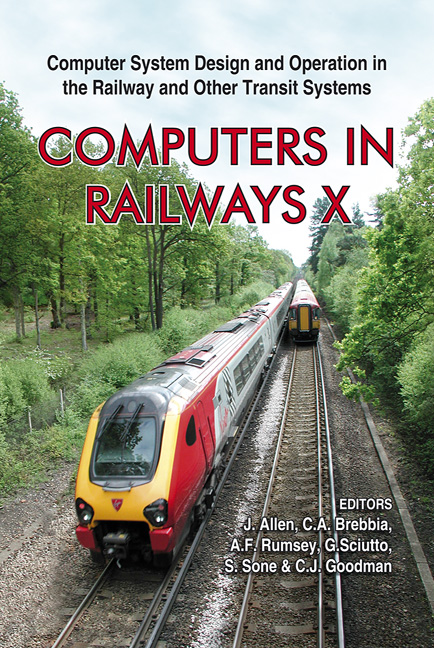Application Of Communication Based Moving Block Systems On Existing Metro Lines
Price
Free (open access)
Transaction
Volume
88
Pages
10
Published
2006
Size
2,723 kb
Paper DOI
10.2495/CR060391
Copyright
WIT Press
Author(s)
L. Lindqvist & R. Jadhav
Abstract
The unique features of Communication Based Train Control (CBTC) systems with Moving Block (MB) capability makes them uniquely suited for application ‘on top’ of existing Mass Transit or Metro systems, permitting a capacity increase in these systems. This paper defines and describes the features of modern CBTC Moving Block systems such as the Bombardier* CITYFLO* 450 or CITYFLO 650 solutions that make them suited for ‘overlay’ application ‘on top’ of the existing systems and gives an example of such an application in a main European Metro. Note: *Trademark (s) of Bombardier Inc. or its subsidiaries. Keywords: CBTC, Moving Block, CITYFLO, TRS, Movement Authority, norming point, headway. 1 Introduction The use of radio as a method of communication between the train and wayside in Mass Transit systems, instead of the traditional track circuits/axle counters and loops is gaining popularity. The radio based CBTC systems are uniquely suited for application ‘on top’ of existing Mass Transit or Metro systems for increased traffic capacity as CBTC systems normally do not interfere with the existing systems. This allows an installation of the CBTC system in a line in operation whilst maintaining full safety and capacity during the process. The fact that CBTC systems also allow Moving Block operation adds to the possible increased traffic capacity that can be achieved with such systems.
Keywords
CBTC, Moving Block, CITYFLO, TRS, Movement Authority, norming point, headway.





